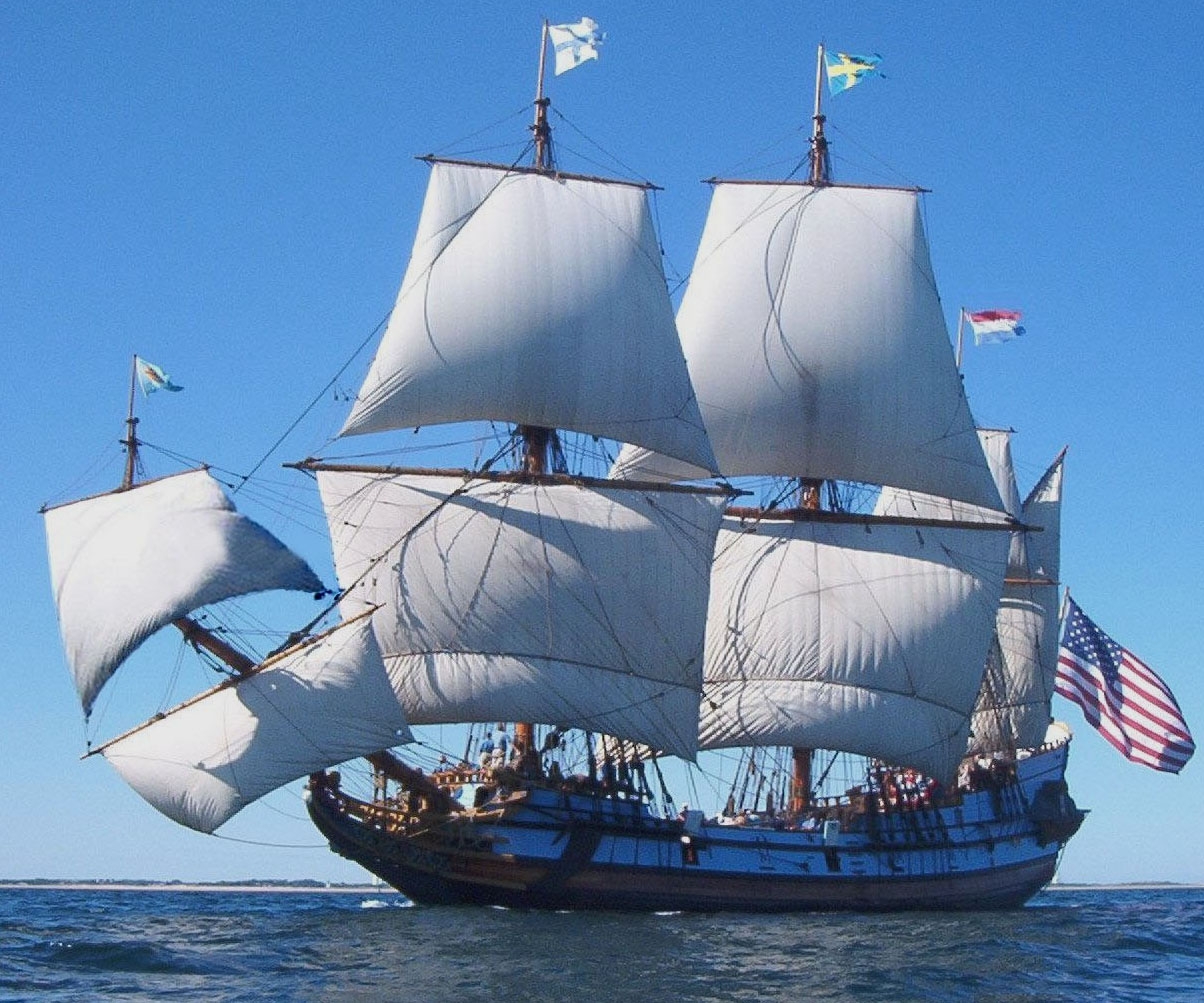
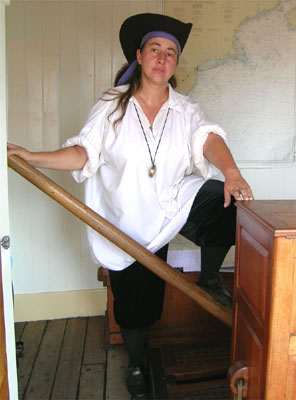
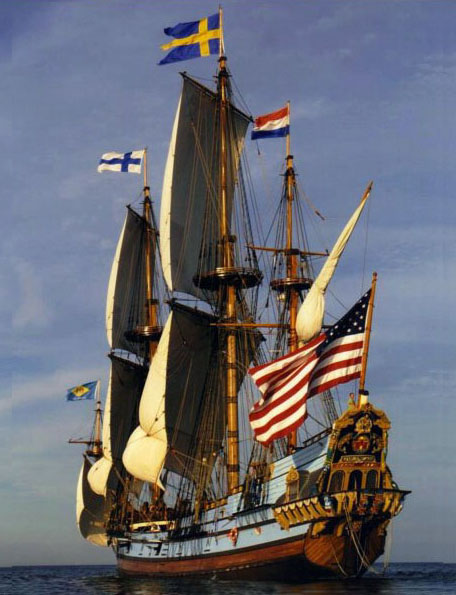
Tall Ships -- Kalmar Nyckel
After trying out a few other tall ships, I ultimately settled with Kalmar Nyckel. There are not many tall ships from the beginning of the 17th century, which is what I was looking for in order to match my other interests. While the renaissance fencing master Salvator Fabris could not have sailed on this ship (as it was built around 1625, which is several years after his death), students of Fabris (like me :-) very well could. I have been sailing on her (replica, of course) up and down the U.S. Atlantic coast since 2007. My stays with her ranged from the whole three summer months to several of the most adventurous voyages each year.



My principal assignment especially for longer voyages is the helmsman role (the captain said I was so good at it that they do not hesitate to let me drive whenever I show up, although I have not been able to make it more than once a year lately :-). This does not mean I have to steer the whole week or so, however. I take the helm as is required by the more demanding situations/maneuvers, such as departing and arriving at a harbor, going through narrow channels, during strong winds, and the other summer also during our demonstration of various sailing maneuvers (including heaving-to, tacking, wearing, etc.) for the crews of the National Geographic. Or else for coast guard inspections. During easier conditions, all members of the crew take their turns at the helm, although I may be helping the newest ones to "get their bearings" then. And why am I holding a huge stick instead of a steering wheel in the pertinent picture? Whipstaff was used for helming even on ships of this size until some 50 years after the time of Kalmar Nyckel, which is when the steering wheel came into common use. (You can tell I enjoy making costumes appropriate for the period as well.)
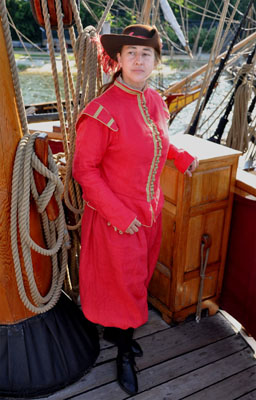
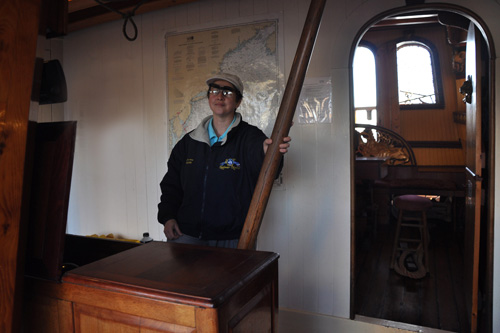
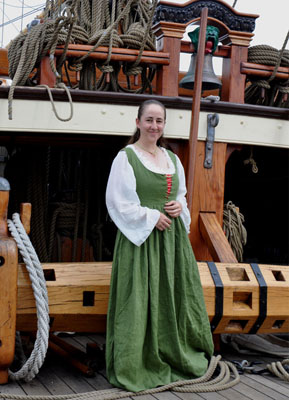
The original Kalmar Nyckel was one of America's pioneering colonial ships. Its historical significance rivals that of the Mayflower, yet her remarkable story has never been widely told. Kalmar Nyckel sailed from Sweden to the New World in 1638 leaving its passengers to establish the first permanent European settlement in the Delaware Valley, the Colony of New Sweden in present-day Wilmington, Delaware. She made a total of four roundtrip crossings of the Atlantic—more than any other ship of the era. Her first voyage to the New World left 24 settlers of Swedish, Finnish, German and Dutch descent in the Delaware Valley. Joining them was a black freedman who sailed from the Caribbean aboard her companion ship the Fogel Grip.
Kalmar Nyckel is a full-rigged Dutch 200 tonne Pinnace. She has 141 feet of sparred length, beam of 25 feet, sail area of 7600 square feet, and she is 105 feet tall (from waterline to main flagstaff). And yeah, as can be seen for example in my picture on the very right below, we "dress like pirates" (to make he public happy) sometimes too.
When it comes to setting the sail, dropping the anchor, or even scrubbing the deck, everything on the ship is done the traditional way that would have been in place at the beginning of the 17th century.
Of course Kalmar Nyckel has guns, and she is not afraid to use them either!
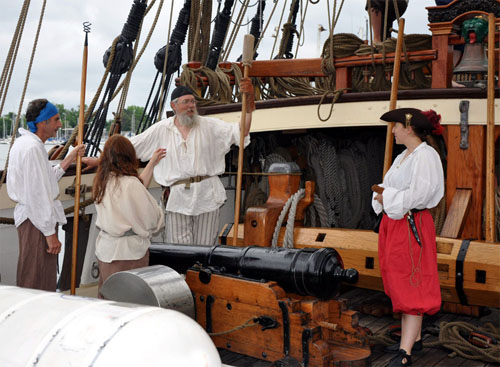
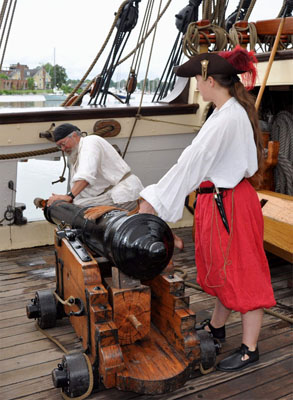
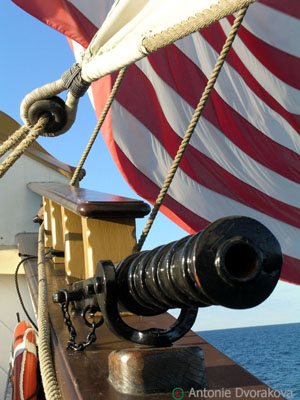
It is a very responsible task to be an officer of the watch or even a deck chief. The other time a chief indeed proved to be in the right place. We needed a new main halyard tail. Anyone who has an idea what I am talking about knows that while sailing, we were not able to take the old one apart in order to find out how it is made. Our relief captain, decided this was an "Antonie job." So she assigned me to help our quarterdeck chief with the making of the halyard tail. He took the task very seriously, and proceeded to study the book of knots in order to find out about the pertinent procedure, beginning with what length of rope we should start with. And we begun with the first seizing. At this point, our chief begun discussing the issue with the other, the main chief. But by the time they were done with the studying and the seizing, almost two thirds of the time we had for the completion of the task was over. I am a Czech girl, who generally sticks to traditional role of "handing the hammer and the nails to the guy on the ladder and encouraging him by praising his skill heavily." So I had been helping quietly up to this point. But when the guys begun pondering how the most puzzling part of the task, the braiding, is to be done, I considered the existing time pressure and asked if I could take my turn trying. What transpired then is aptly illustrated below. When my chief saw how things were going, he announced he would be happily helping by moving as needed the rubber bands that were making my braiding task feasible. He also said it was now clear to him why women are in charge on the ship :-). Speaking of which, please, meet our Captain Lauren Morgens, shown working in her cabin, and the Relief/Port Captain Sharon Litcofsky, who also always takes a good care of us (shown pointing out an approaching hurricane forecast).
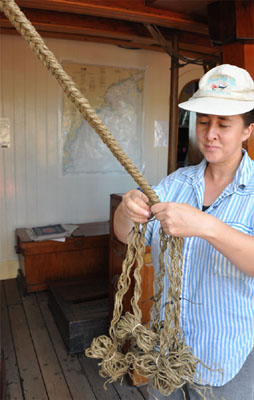
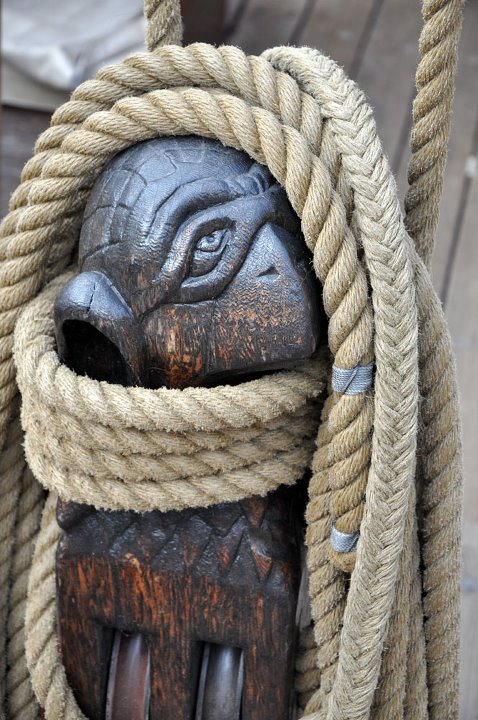
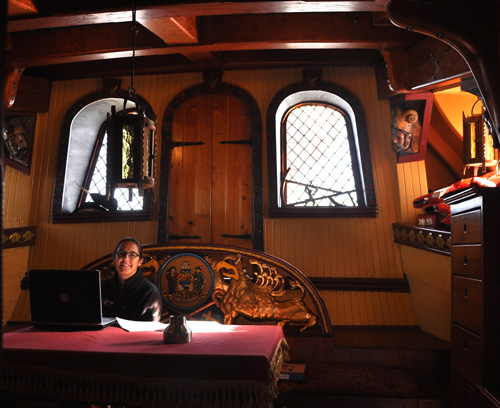
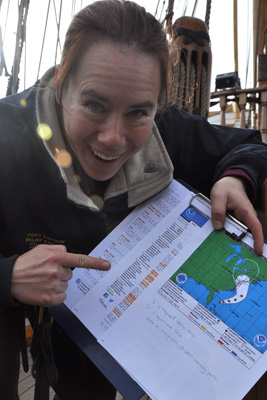
There are times when the watch dogs carved on both sides of our ship can feel free to close an eye, but there are also times when they need to look out for the weather very well...as when it really blows...
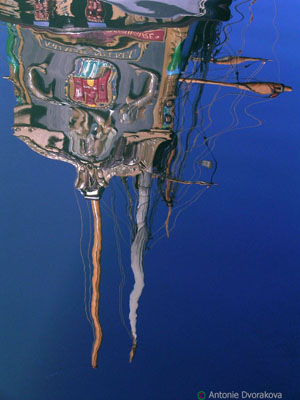
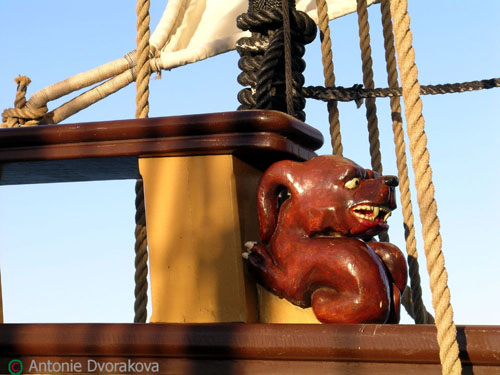
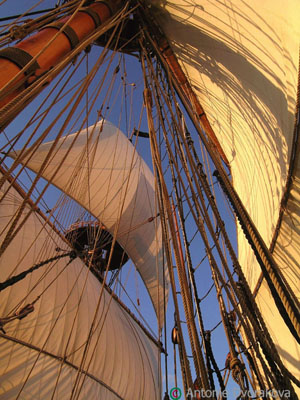
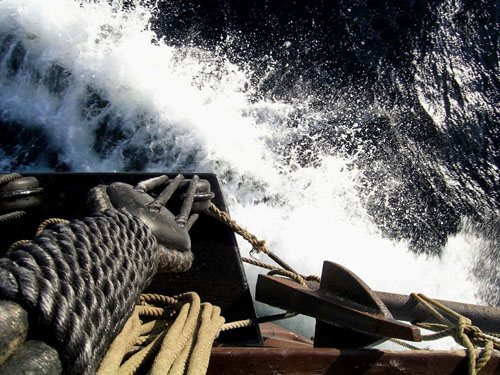
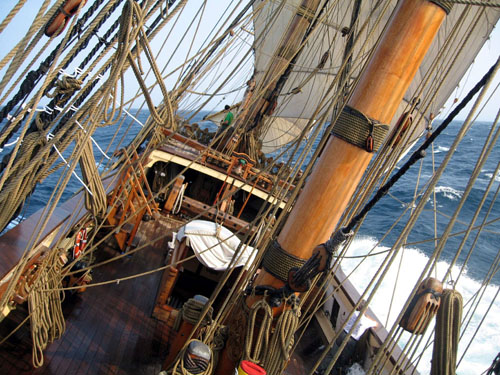
But even more amazingly, sometimes the appearance of the world out there is quite funny... :-).
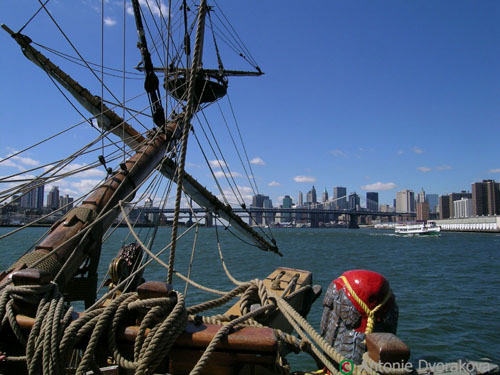
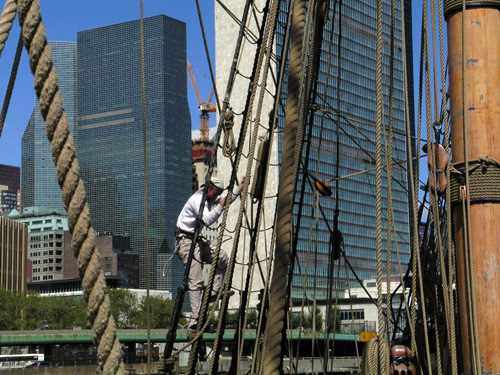
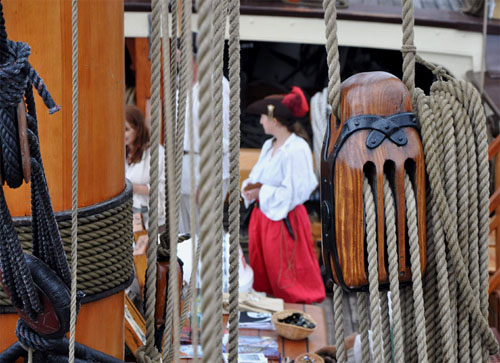
When sailing for weeks (or months--on the original Kalmar Nyckel), the crew is divided into two halves, the port and the starboard watch. These two groups take turns being "on watch," which means that they take care of all the things that continuous sailing not only from sunrise to sun down, but rather day as well as night, requires. Basically, one works the ship, unless she/he sleeps, eats, or performs chores. The port and starboard watches are named after the respective sides of the ship where they muster (pictured is just a sample of the watches of which I have been a part over the years).
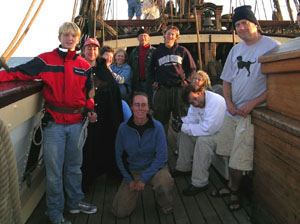
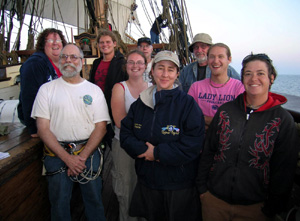
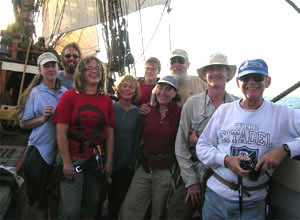
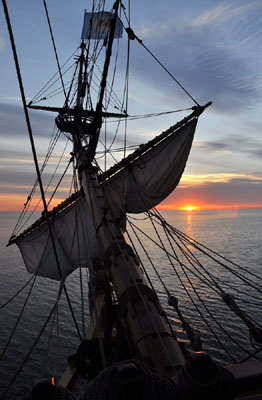
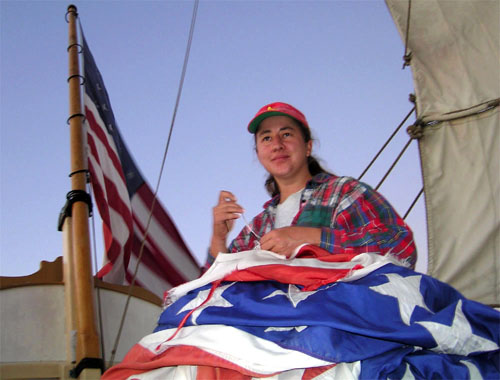
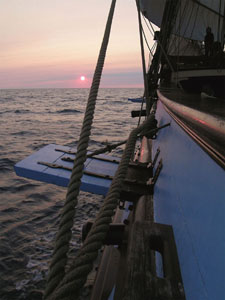
The Swedish watch system is quite demanding. Thus, shore leaves are enjoyed properly. But no, they did not make me cook. Instead, I volunteered to become an acting stewart in order to give a break to the regular ship's cook for a few days. My most appreciated meal involved "hovezi rostenky." To this day, several years later, both Kalmar Nyckel's captains sigh and lick their lips when reminded of this Czech dish. At the lobster dinner in Provincetown, then, Captain Morgens and her father, who was visiting, are on my left (speaking of which, ask me on occasion to tell you a story how we anchored off of Long Island in order to visit the captain's parents at their house).
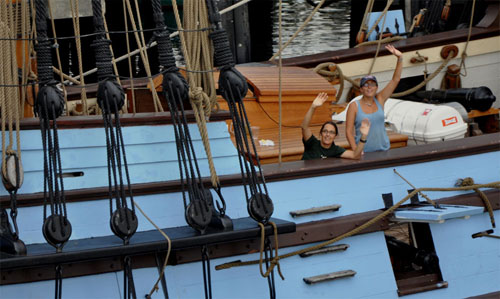
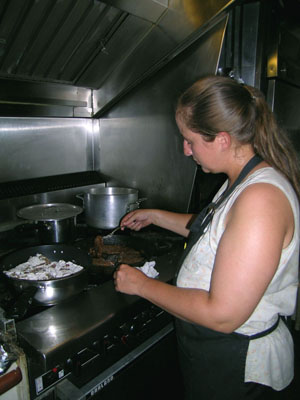
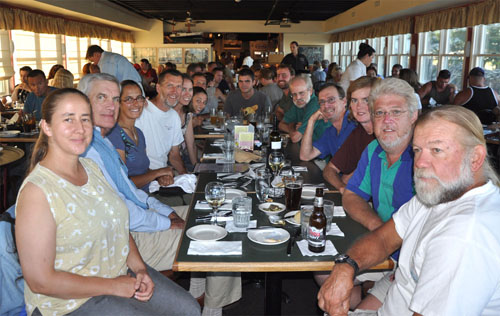
In 2011, I sailed on Kalmar Nyckel yet again during her voyage from Wilmington (DE) to Provincetown/Cape Cod (MA). Dolphins accompanied us, meaning in particular our Port Watch (pictured below), during the journey.
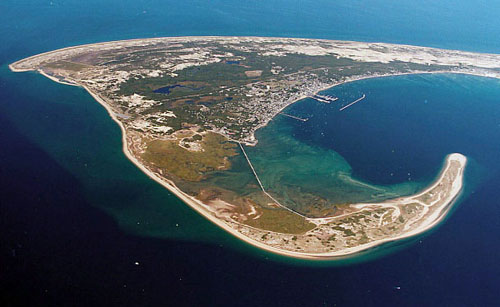
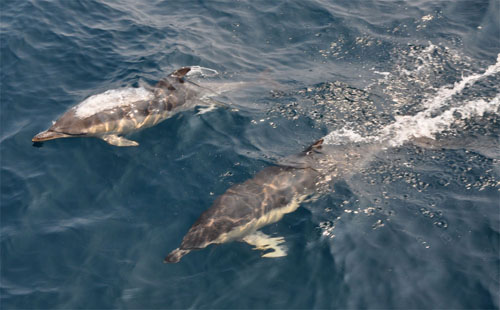
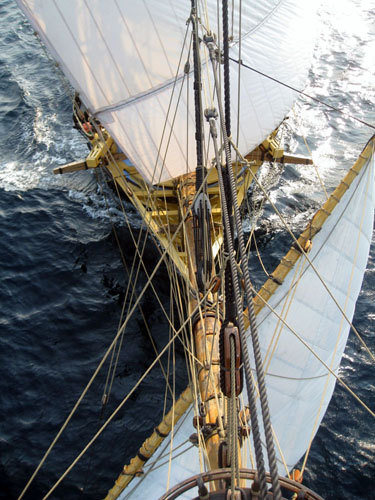
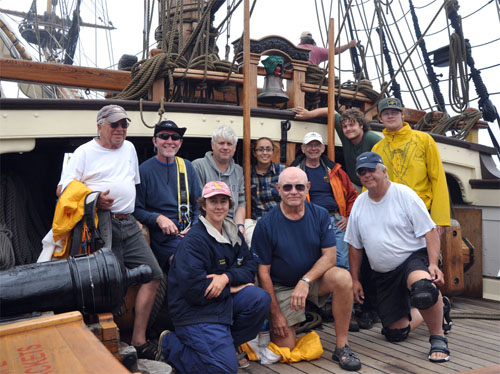
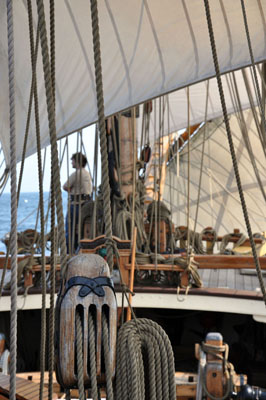
The following couple of pictures give a glimpse to that part of the everyday life of the ship's crew that takes place down below. Our new and improved dishwasher as well and lunch in the mess are shown (the year 2011 was, after all, marked by a renovation of the galley area).
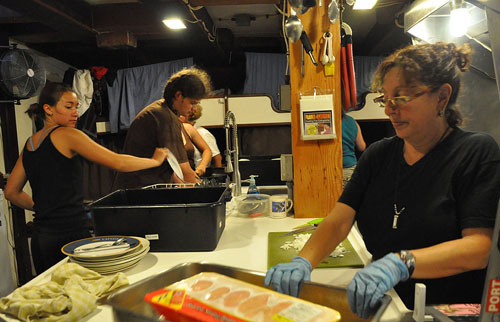
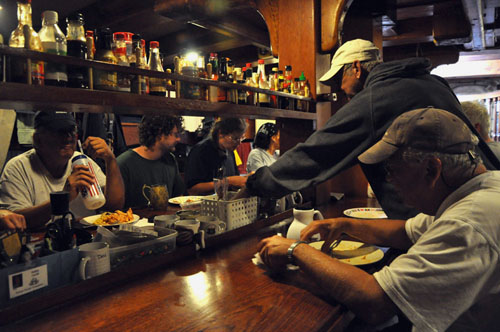
But Timmy, one of the two ship's cats, is always more interested in demonstrating the use of the bunks, the crew's sleeping quarters. He must remember me, as wherever he used to sleep until then, whenever I show up, he keeps sticking himself into my bunk. And that not only when the ensign is taken down at dusk, but at any time.
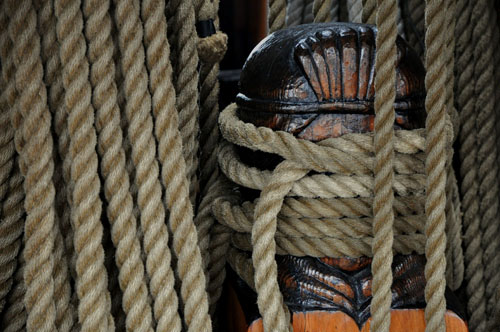
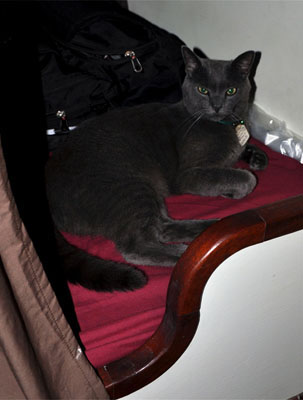
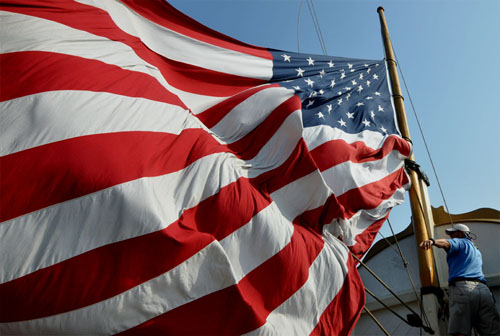
The captain always allows for extra time, so we tend to be in no hurry to our destinations. And we sail onto the open ocean as much as we can. On this our trip, we thus enjoyed what many seasoned crew members designated perhaps the best Kalmar Nyckel voyage ever. When we still arrived at Provincetown ahead of schedule, the harbormaster was thus not ready for us. Therefore, in the meantime, we turned ourselves into the coolest private whale-watching boat around (all the tourists begun taking pictures of our ship instead of minding the whales :-) (second photo courtesy of Dan).
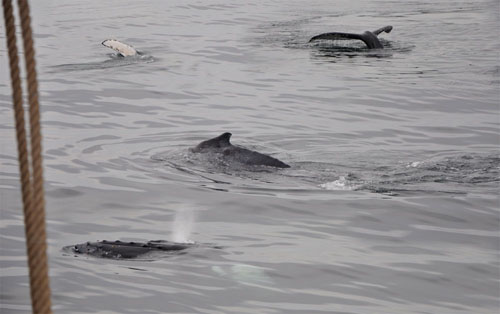
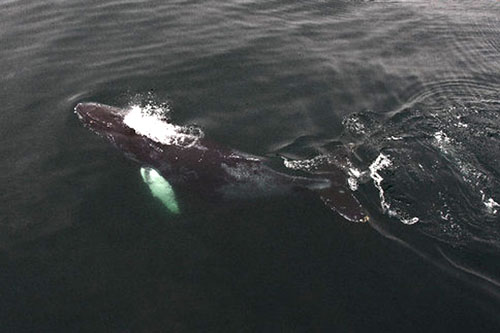
I even made a few recordings during this trip. Please, excuse their poor quality, as they were made with a photo camera, but feel free to enjoy them by clicking below.